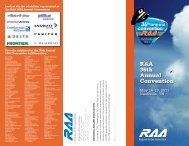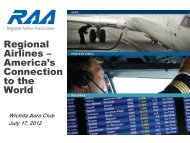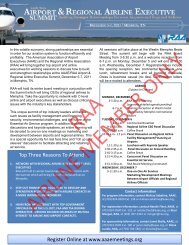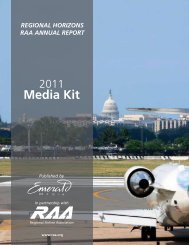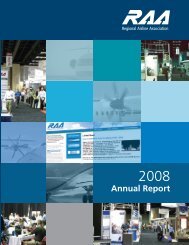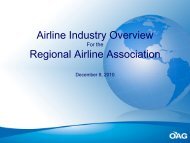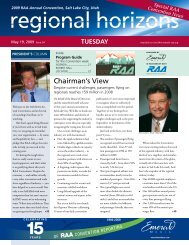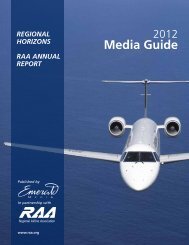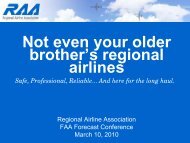In the intervening years, carriers have continued to invest in and improve accessibility forwebsites and continue to provide assistance to passengers that are unable to use kiosks. Websiteadvancements include, in one case, building a text alternative website, in other cases buildingaccessibility features into mobile websites or in downloadable applications. Carriers frequentlywork with accessibility boards or consultants to assess websites and build in accessibilityfeatures where feasible.In addition, the IATA Common Use Working Group (IATA Group), which includes carriers,airports, and vendors, has periodically met to discuss how to incorporate accessibility featuresinto kiosks. The IATA Group analyzed the SNPRM and provided extensive information on theresearch, redesign, and reprogramming that will need to go in to an accessible kiosk (SeeAttachment 1). If the Department moves forward with a kiosk standard, this IATA Group willbe instrumental in providing an industry kiosk solution.III.KiosksA. DOT ProposalThe SNPRM proposed that all kiosks ordered 60 days after the effective date of the final rule,and to be installed in U.S. airports with 10,000 or more enplanements per year, would have tomeet new DOT accessible kiosk standards. The proposed kiosk standards are, essentially, asubjective amalgam of the U.S. Department of Justice‟s (DOJ) 2010 American with DisabilitiesAct (ADA) Standards for Accessible Design applicable to automated teller machines (Section707) and DOT-selected provisions from Section 508 of the Rehabilitation Act of 1973 (36 CFR1194.25) applicable to self-contained closed products. The Department has expressed an interestin also imposing a retrofit requirement to existing kiosks. 9B. The Department Should Provide Additional FlexibilityAs described in the IATA Group report, no kiosks currently exist that meet the proposedSNPRM kiosk standard. The IATA Group, comprised of carrier, airports and vendorrepresentatives that meet to discuss common use kiosk technologies, states that it would take ayear of design and standard development work to develop a prototype kiosk to meet any kioskstandards in the final rule. This would not include additional time needed for the carrier todevelop software that supports airline applications. 10 They also conclude that the kioskdevelopment process could not start until the publication of a final rule that includes the finalstandards. The need for kiosk development is also supported by the Preliminary RegulatoryAnalysis (“PRA”), which states:Based on the timetable for other IATA shared-use standards development activities, itwould be reasonable to anticipate that the standards setting and applications development9 See 76 Fed. Reg. 59318.10 See Attachment 1, page 1.6
processes will take at least 1 additional year after the finalization of the hardwarespecifications before carriers can install and run fully developed and tested versions ofcompliant applications on accessible kiosk systems. 11In addition, not every kiosk needs to be accessible; designated accessible kiosks will strike theright balance of meeting passenger needs without creating an undue burden. Indeed, just as notevery parking spot, bathroom, or transit seat is required to be accessible, neither should everyairline kiosk. We note that current Access Board ADA Accessibility Guidelines (ADAAG) andDOJ ADA Title III regulations permit one accessible ATM where more than one ATM of thesame type exists at a single location and the Department should take the same balanced approachin this rulemaking. 12The Department should provide additional flexibility for accessible kiosks, instead of theproposed prescriptive standard that would apply to all kiosk orders only 60 days after the finalrule effective date. A more flexible approach should consist of two components, additional timeto comply with the proposed standard and reducing the number of kiosks that must comply withthe new regulation. Such an approach would recognize the development needed to create anairline accessible kiosk and avoid the unnecessary and costly (“undue”) burden of anyrequirement that all airline kiosks be accessible.1. The Department Should Utilize “Flexible Regulatory Tools”The Department should adopt more flexible approaches to regulating accessible kiosks. Theproposed standard would unnecessarily require all airline and airport kiosks to be accessible.This approach is inconsistent with other types of accommodations, including some that alreadyexist in part 382. For example, part 382 requires one accessible bathroom on twin aisle aircraft,not all bathrooms; it also requires that 50% of aisle chair armrests are movable in all classes ofservice, not all the aisle chair armrests. 13 Each of these existing part 382 requirements balancesthe need for an accommodation with other appropriate factors such as necessity and cost.Accordingly, we urge the Department to adopt a final rule that permits either of the followingalternatively-compliant options: (1) require 10% of future kiosks ordered to include accessible11 Preliminary Regulatory Analysis page 25.12 See ADAAG, Part II ABA Application and Scoping, Chapter 2, Section 220 Automatic Teller Machines and FareMachines, which states “220.1 General. Where automatic teller machines or self-service fare vending, collection, oradjustment machines are provided, at least one of each type provided at each location shall comply with 707.”Available at http://www.access-board.gov/ada-aba/final.cfm#f220; See also 28 CFR 36, Appendix A to Part 36—Guidance on Revisions to ADA Regulation on Nondiscrimination on the Basis of Disability by PublicAccommodations and Commercial Facilities, Section 36.302 Modifications in Policies, Practices, or Procedures“For example, a particular bank may be in compliance with the accessibility guidelines for new constructionincorporated in appendix A with respect to automated teller machines (ATM) at a new branch office by providingone accessible walk-up machine at that location, even though an adjacent walk-up ATM is not accessible and thedrive-up ATM is not accessible.”13 See 14 CFR 382.63 and 382.61.7






